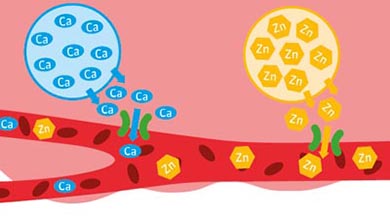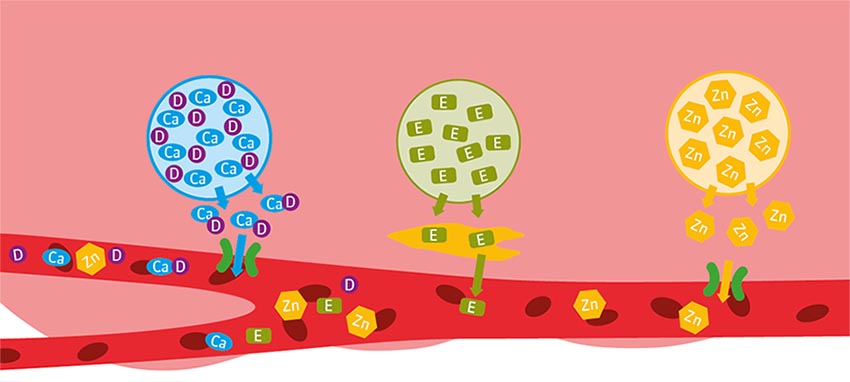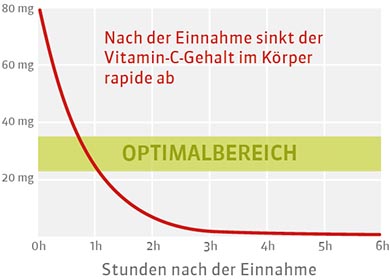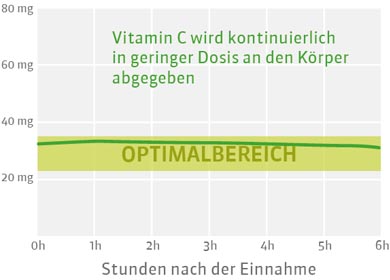Microtransporter
During their processing, the vitamins and minerals are packed into small beads called microtransporters. This allows easy mixing of different amounts of individual microtransporters and their contained micronutrients. For some people, the finished mixture contains a higher proportion of vitamin C-containing microtransporters, and for others, a higher proportion of calcium-containing microtransporters.
This allows any micronutrient recipe to be created quickly and accurately through targeted blending. In addition, the micronutrients are better protected from oxygen by their packaging in the hard microtransporter and thus remain stable for much longer compared to dissolved micronutrients, for example.
Optimized absorption into the body
The proper absorption of micronutrients into the body is a complex issue, as many of the substances can inhibit each other’s absorption. Therefore, it is of great importance how, where and at what rate the micronutrients are released in the intestine.
Standard micronutrients: mutual inhibition of uptake

Blockade of absorption of certain micronutrients
Certain micronutrients are absorbed into the body through the same processes/channels. A good example of this is calcium and zinc. If a calcium/zinc powder mixture is taken in a gelatin capsule, both powders are released in the intestine. The intestinal mucosa subsequently begins to absorb calcium, for example, which is typically administered in significantly higher doses, via a limited number of calcium channels. However, zinc, which should also be absorbed through these channels, is displaced by the amount of calcium and thus in many cases remains largely in the intestine until it is excreted again. For this reason, certain micronutrients cannot be administered together in the same form. So be careful with micronutrients such as effervescent tablets or gelatin capsules that contain calcium and zinc together, for example.
NutriMe: Optimized absorption properties

Spatially separated distribution for better absorption
The microtransporters are manufactured in such a way that mutually blocking substances are not in the same beads. Thus, for example, calcium is secreted in one part of the intestine and zinc in another. Thus, each of these micronutrients is absorbed away from other blocking micronutrients. In addition, the continuous but small release of micronutrients does not stress the uptake mechanisms so much that uptake of only one of the micronutrients would occur.
Optimized recording properties

In addition, it is known that certain micronutrients support each other in their absorption. Therefore, vitamin D and calcium, for example, are secreted together from the same microtransporters to best promote the absorption of micronutrients.
Certain fat-soluble vitamins, such as vitamin E, require carrier fats to be absorbed into the body. For this reason, vitamin E supplements are often recommended to be taken together with fatty flour. In this process, the vitamin E can dissolve in the dietary fat and be absorbed into the body through it. The microtransporters store the vitamin E until it comes into contact with dietary fats up to hours later, when it can finally be absorbed. Previously, the flour is absorbed into the body to a lesser extent by combining it with the omega-3 fatty acids or phytosterols also contained in NutriMe.
Proper supply throughout the day
With micronutrients, the wrong dosage form can very quickly lead to the body not being adequately supplied. Therefore, with micronutrient preparations, it is always important to pay attention to how and at what rate they are delivered to the body.
Standard vitamins:
Too quickly broken down by the body

Rapid degradation of vitamin C in a standard preparation
Most micronutrient preparations dissolve immediately in water and are thus also immediately delivered to the body in the intestine and absorbed into the bloodstream. This has some significant disadvantages: Vitamin C is removed from the body very quickly; with a half-life of 30 minutes, the body loses half of the vitamin C in the blood every half hour. Of the typical daily amount of 80 mg of vitamin C, only about 5 mg is left after just 2 hours. After 4h it is less than 1 mg and thus below the effective limit.
Microtransporter: Optimal delivery throughout the day

NutriMe: Permanent supply
So, since the body breaks down vitamin C very quickly, it is necessary to supply it with small amounts of vitamin C all the time. The micro-transporters are designed to slowly release the vitamins and minerals they contain into the body throughout the day. Thus, although the body degrades vitamin C very quickly, it is constantly supplied with the optimal dose of the vitamin.

